I was almost blindsided by a beauty video from TikTok: a child reveals her horrific ordeal as young influencers push ‘Generation Alpha’ girls to use products too powerful for their skin
Last year, Amelia Gregory spent four days in hospital hooked up to an IV as doctors fought to treat a skin infection that had spread to her left eye, preventing it from robbing the 13-year-old of her sight.
Cause? Amelia had decided to try a skincare treatment she had seen demonstrated by a teenage influencer on the social media platform TikTok.
Experts are reporting a worrying rise in similar cases, as young people increasingly watch tutorials on everything from exfoliation and skin peels to homemade moisturizers and masks – some of which are taught by children as young as ten.
After watching such a video, Amelia tried a mixture of products on her skin, believing that they would have an anti-aging effect and make her skin “glow.” But some products contain retinol, a form of vitamin A often used to reduce wrinkles.
Although this ingredient increases skin cell production, when used excessively and on younger, more sensitive skin, it can cause burning, redness, flaking, and peeling. “Amelia came running down with her face bright red and screaming in pain,” recalls her mother, Claire, 41, a female health practitioner from Cheshire.
After watching a TikTok video, Amelia tried a mixture of products on her skin, believing they would have an anti-aging effect and make her glow.
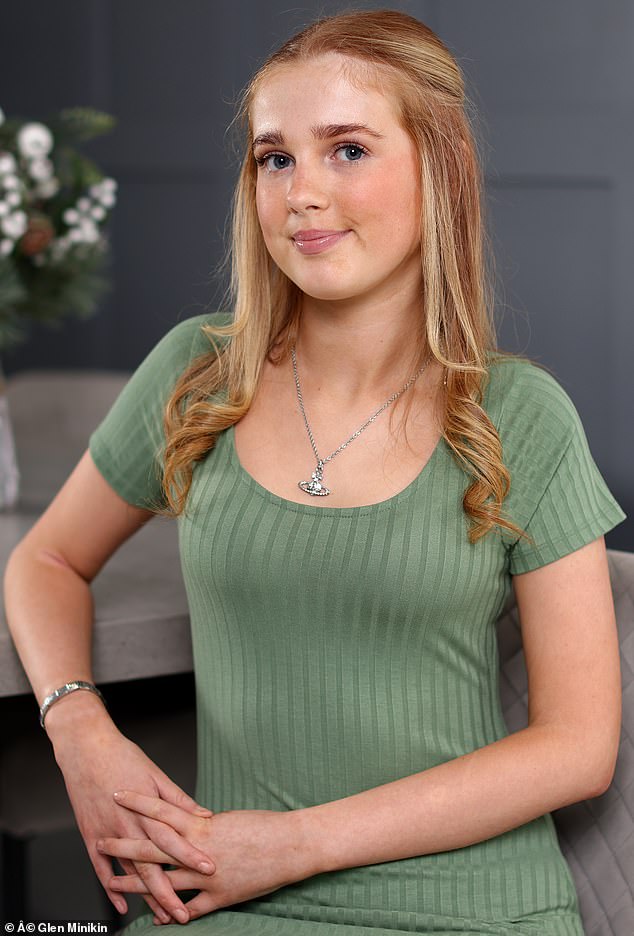
But instead, the teen caused long-term damage
‘She had skin peeling off her face and angry red marks. I asked in a panic what she had done and she sobbed: “A skin care video”.’
Through her tears, Amelia explained that she had followed the instructions of a young skincare influencer, who told her followers how to make a “mask” using a retinol cream, another retinol product, and a weak acid product often used by older women to brighten and exfoliate the skin. .
“Her face was completely red and raw,” Claire says. ‘Whatever she had put on it had burned her skin so badly that she had welts and her skin was red and flaky. I was amazed.’
She took her daughter to the doctor, who said that it would go away because it was only caused by care products from a store. But as the days passed, Amelia’s skin became more painful and her left eye became red and swollen. Claire then took her to a pharmacist, who took one look and said, “Go to A&E.”
Amelia was immediately admitted because within a few days she had developed a bacterial infection in the tissues under the skin – a condition known as cellulitis – and the infection had spread to her eye.
‘That flaky, open skin had become infected and the infection had spread to her left eye and at some point it looked like it was going to spread to the right eye too,’ says Claire. ‘Doctors told me the infection could cause her to lose her sight. I was terrified and couldn’t believe it – all this about skin care.’
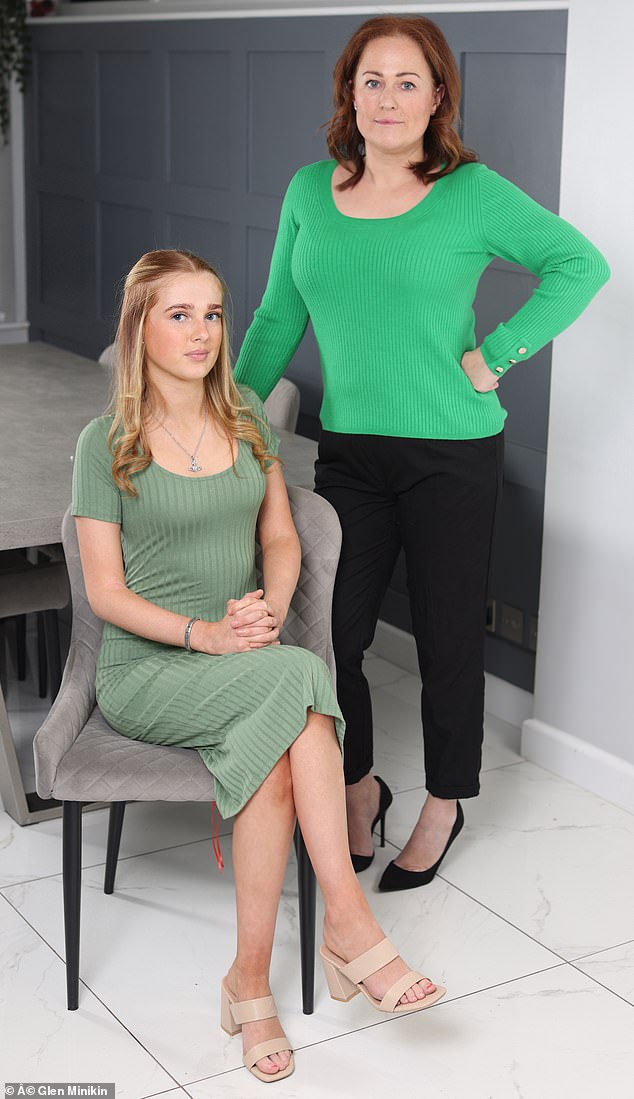
Her mother Claire said a dermatologist had warned that it would take a long time for Amelia’s skin to heal properly
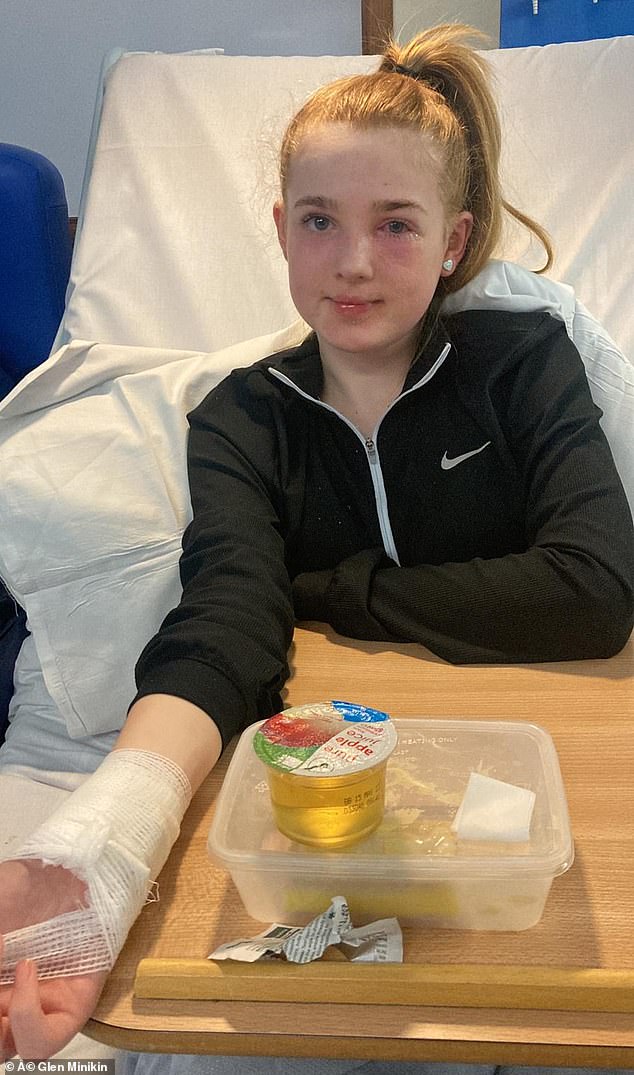
Amelia, 13, is showing signs of improvement in hospital after doctors battled to save her sight
Later that day, barely able to open her eyes or blink, Amelia was given an IV.
Doctors say they are seeing more cases like this, especially among so-called Generation Alpha – those born since 2010.
They represent a growing market for skincare and beauty products and, having grown up in the world of digital media, have become avid followers of young beauty influencers, whose appeal is enormous. Penelope Disick, 11, and North West, ten – both members of the US-based Kardashian family – have millions of followers for their beauty and skincare TikTok videos.
And social media twins Haven and Koti, seven, from Oklahoma, have 4.8 million followers on TikTok, where they share “get ready with us” videos alongside images of what they bought in their latest skincare purchases.
But this trend is raising concerns among experts such as Dr Derrick Phillips, dermatologist and spokesperson for the British Skin Foundation. “Influencers share tips and product recommendations when they may not have all the information, and what works for one person may not work for another,” he says.
Mixing skin care products like retinol, peels and acids – as Amelia did – is especially potentially risky, he adds. “Both acids and retinol exfoliate or peel away the top layers of the skin,” says Dr. Phillips. ‘In combination, this can essentially cause a mild chemical burn – and result in dry, red or darkly pigmented, irritated and sensitive skin.
‘Using powerful ingredients without understanding their interactions and concentrations can also worsen existing skin problems, or cause new ones, such as perioral dermatitis (red rash around the mouth), which is becoming increasingly common and can result from a weakened skin barrier if resulting from the use of unsuitable products.’
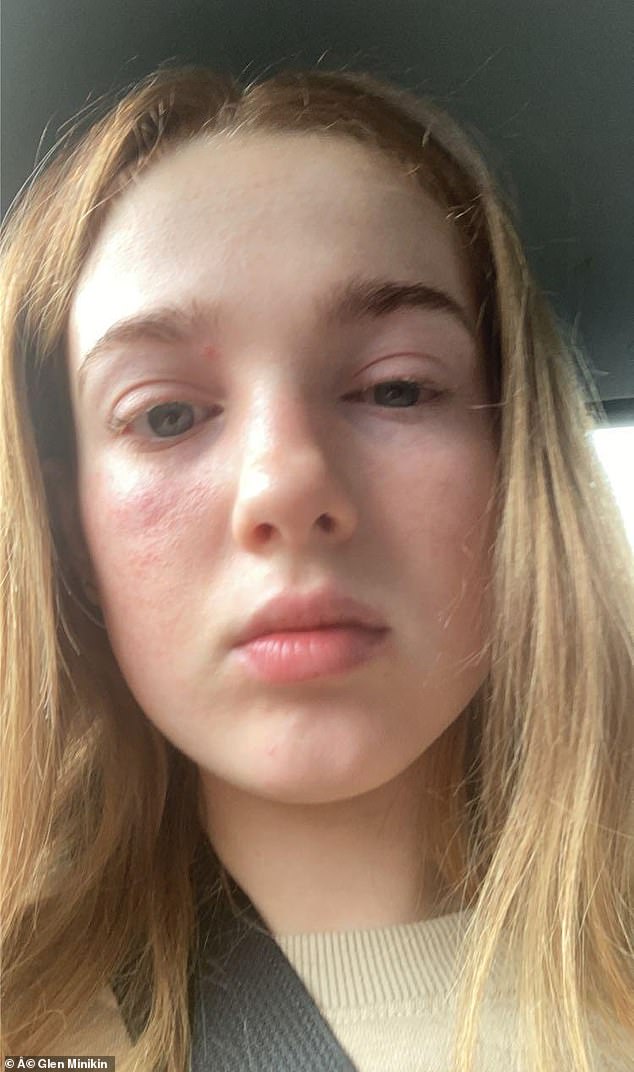
Within a few days, Amelia had developed a bacterial infection in the tissues under the skin – a condition known as cellulitis – and the infection had traveled to her eye.
He says that young people should not use retinol because it is too powerful for developing skin, and that even adults should use it with caution. They should start with a patch test to see if it causes a reaction and then start with a low concentration. The only time retinols should be used on teens is to treat acne, with supervision, he says.
Other worrying social media trends he sees include uneven application of sunscreen to ‘create a contour effect’ – where areas without sunscreen become red or tanned, creating the ‘contour’, which makes the face appear slimmer. ‘But this puts the skin at risk from the harmful effects of UV rays, including damage that can lead to skin cancer,’ he says.
Dr. Glyn Estebanez, an aesthetic physician and surgeon who is Dr. Glyn, who runs Medispa clinics in London and Chester, agrees, adding: ‘I can’t stress enough how dangerous it is for people of all ages to follow skincare advice from social media. Firstly, anyone can give advice on these platforms and call themselves an expert.
‘And even if they are qualified, everyone’s skin is different, so the advice that works for one person’s skin is unique and may not be effective for someone else’s. It can even cause damage.
‘Children in particular generally have thinner and more sensitive skin than adults. It is also more susceptible to irritation from chemicals and irritants.
‘I would advise parents and carers to discourage their teenagers from following skincare advice on social media and also to remember that teenage skin generally does not need strong, abrasive chemicals as most teenage skin does not need repair from environmental influences. damage or aging.’
Amelia was 11 when she started watching skincare videos on TikTok. Beautiful teens and tweens (9 to 12 years old) informed their followers about skin care ‘hacks’ and tips. ‘I thought it was normal since all her friends were following skincare videos of other teenagers and young girls. Skin care is very fashionable among Amelia and her friends,” says Claire.
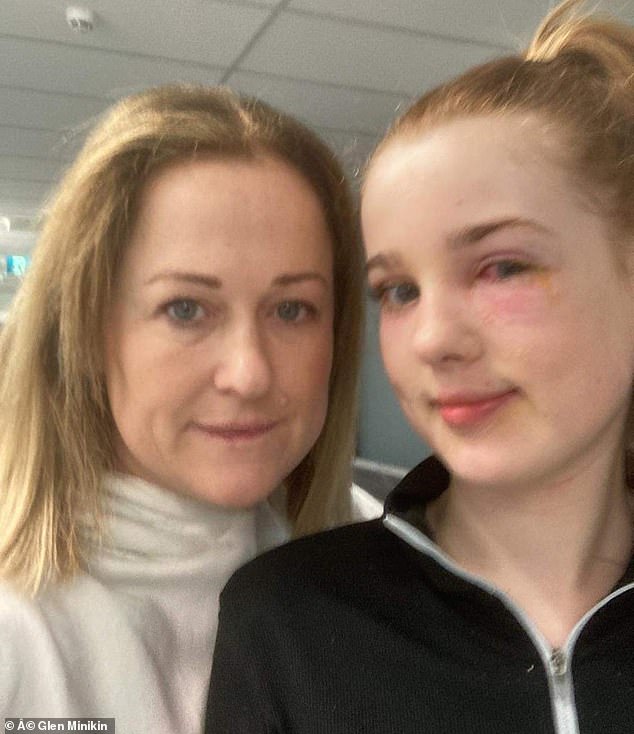
Amelia with her mother Claire, who was shocked to learn that her daughter could have easily bought the products she tried in a store
Amelia soon followed more and more influencers, including one who posted about using retinols – advice that landed her in the hospital for four days last March.
Her mother wrongly believed that only people over 18 could buy retinol. In fact, no such rules exist and Amelia could have easily bought the products she tried in a store.
Claire says: ‘A few weeks after we left hospital, we saw a dermatologist who looked under the microscope and said that although Amelia’s skin had healed superficially, it would take a long time for the deeper layers to heal.
‘She had caused irreparable damage and would need factor 50 sunscreen on her face in both summer and winter for the foreseeable future. Her skin is also permanently more sensitive and irritable. We tried so many creams and each one caused pain and a flare up due to the damage.
‘Doctors had to prescribe her high doses of antihistamines because she reacted to anything that came into contact with her skin. She is still on the antihistamines to this day.”
Claire is now speaking out to warn other parents of the dangers. “Watch what your kids watch online, make sure they only have skin care designed for young skin and make sure they don’t pinch anything made for older skin,” she warns.
“As her mother, I take full responsibility for what she saw. But I do think it is wrong that a cream containing retinol can be sold to children.
‘At her age she cannot buy Red Bull, but she can buy a cream that damages her skin.
‘The doctors were able to save Amelia’s skin and eyesight; it could so easily have gone the other way.”
Good Health reached out to TikTok for comment but received none.
